By Mason B. Webb
As the man in charge of the Third Reich’s logistical apparatus of mass deportation and extermination of two million European Jews at Auschwitz-Birkenau and other death camps, Adolf Eichmann was the acknowledged center of Hitler’s “Final Solution.”
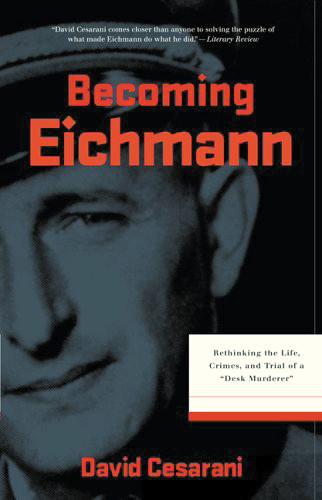 Drawing on recently discovered documents, British author David Cesarani has created a stunning new biography of Eichmann—the first in over 40 years. In Becoming Eichmann: Rethinking the Life, Crimes and Trial of a “Desk Murderer” (Da Capo Press, Cambridge, Mass., 2006, 458 pp., photographs, maps, index, bibliography, $27.50, hardcover), he rejects and rethinks many of the common myths and traditional beliefs surrounding how an ordinary German-Austrian, with a cordial working relationship with Zionist Jews in Germany and who supported the peaceful emigration of Jews to Palestine, became a fanatic anti-Semite and the architect of genocide.
Drawing on recently discovered documents, British author David Cesarani has created a stunning new biography of Eichmann—the first in over 40 years. In Becoming Eichmann: Rethinking the Life, Crimes and Trial of a “Desk Murderer” (Da Capo Press, Cambridge, Mass., 2006, 458 pp., photographs, maps, index, bibliography, $27.50, hardcover), he rejects and rethinks many of the common myths and traditional beliefs surrounding how an ordinary German-Austrian, with a cordial working relationship with Zionist Jews in Germany and who supported the peaceful emigration of Jews to Palestine, became a fanatic anti-Semite and the architect of genocide.
Cesarani explores Eichmann’s early life and career within the Nazi state and shows how Eichmann, Hitler’s “expert” on Jewish matters, was not necessarily “hard-wired” or predisposed to orchestrate mass murder.
Grasping the complexity behind the man who many are content to dismiss simply as a “monster,” Cesarani deepens our understanding of the nature of evil. The author argues that Eichmann was not a mindless, banal bureaucrat who never realized what he was doing. On the contrary, writes Cesarani, “As much as we may want Eichmann to be a psychotic individual and thus unlike us, he was not…. Eichmann was neither insane, nor was he a robotic receiver of orders. He was educated to genocide and chose to put what he learned into operation…. What makes his crimes so chilling is that they were not preordained by any evident pathology or built-in racism. Eichmann learned to hate, and to hate in a controlled and impersonal way. He applied business methods to the handling of human beings who, once they had been dehumanized, could be treated no different from cargoes of kerosene. In his mind, there was little difference between setting up a petrol station or a death camp.”
The book follows Eichmann from his normal childhood and upbringing in an upper middle class family, to his career in the petroleum industry, to his indoctrination and politicization after joining the Austrian Nazi party and SS in 1932, to his rise among the elite in Germany, his wartime activities (not merely a desk-bound bureaucrat, Eichmann also commanded an extermination unit in the field detailed to murder Hungarian Jews), his escape from Germany to Argentina, and his capture, trial, and execution. Cesarani melds one phase of Eichmann’s life deftly into the next with the skill of a novelist.
Cesarani also issues a cautionary note: no society—whether totalitarian, democratic, or anything in between, which fosters racist or fanatical thought—is immune from genocidal tendencies. As the author concludes, “Eichmann appears more and more like a man of our times. Everyman as génocidaire.”
Becoming Eichmann is a profound, riveting, and deeply troubling book that deserves to be read and studied by the world.
NEW & NOTEWORTHY
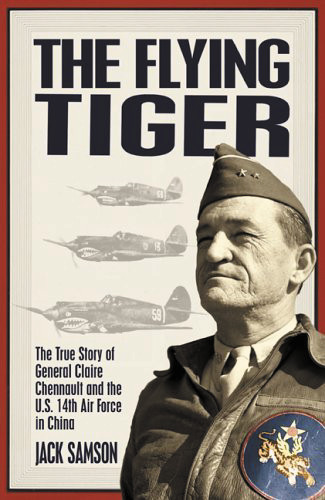 The Flying Tiger: The True Story of General Claire Chennault and the U.S. 14th Air Force in China, by Jack Samson, Lyons Press, Guilford, Conn., 2005 (reprint), 365 pp., photographs, index, bibliography, $16.95, softcover.
The Flying Tiger: The True Story of General Claire Chennault and the U.S. 14th Air Force in China, by Jack Samson, Lyons Press, Guilford, Conn., 2005 (reprint), 365 pp., photographs, index, bibliography, $16.95, softcover.
Probably no theater of World War II has been more ignored by post-war historians than the China-Burma-India theater. This lack of interest is curious given the fact that the CBI—in which the U.S. helped the Chinese fight back against Japanese domination—was one of the most brutal and far-ranging of all the theaters.
World War II also had more than its fair share of crusty, colorful, and controversial leaders, and few were more crusty, colorful, and controversial than Claire Lee Chennault.
In this softcover re-release of his 1987 book, Jack Samson, who served under the general, paints a detailed portrait not only of Claire Chennault, but also of the difficult fighting and logistical headaches in this most remote of battle fronts.
The author, a longtime CBS editor and foreign correspondent, knows of what he writes. He served as a navigator with Chennault’s 14th Army Air Force in China and was the official historian of the 14th USAAF Association.
The American Volunteer Group, better known as the Flying Tigers, made up of former pilots from the Army, Navy, and Marines, had been battling the Japanese in China five months before Pearl Harbor. Long composed almost entirely of fighter aircraft (mostly Curtiss P-40s), the 14th Air Force, after its formal establishment on March 10, 1943, began adding medium and heavy bombers in support of Generalissimo Chiang Kai-shek’s Nationalist Army.
On the surface, Chennault seemed like an unlikely choice to command this outfit. Born in Commerce, Texas, in 1890, Chennault joined the Air Corps in 1917 but saw no action overseas. He did see the future of military aviation, however, and fought hard to discard the outmoded air-war tactics of the Great War and bring the U.S. Army Air Corps into the modern era (for example, he early but unsuccessfully advocated the use of paratroops); his superiors resisted. In 1937, the 47-year-old U.S. Army Air Corps captain was forced to retire from the service, ostensibly from hearing problems but really from years of antagonizing those above him.
With the Japanese having invaded Manchuria in 1931 and making deep inroads into China, Chiang knew he was fighting a losing battle. Learning of the ex-officer’s availability, he hired hard-drinking, chain-smoking, womanizing Chennault as a civilian advisor to the Chinese Air Force. The blunt-spoken American soon saw the great deficiencies of Chiang’s fliers and established programs to whip them into fighting shape.
Not only did Chennault institute revolutionary (for China) pilot training, but he also obtained permission from the U.S. government to allow Army and Navy pilots to resign from their branches and join a combat unit he had established in the summer of 1941—the AVG. With this small but audacious unit, Chennault was able to shock the Japanese and buy time for Chiang.
During seven months of combat in 1942, the AVG, fighting a rear-guard action over Burma, China, Thailand, and French Indonesia, destroyed 199 enemy planes, with another 153 listed as probable kills. The AVG lost only four pilots and 12 P-40s in aerial combat.
The leather-faced Chennault was returned to active duty, promoted to brigadier general, and had his AVG disbanded in favor of a new command designated the 14th U.S. Army Air Force.
Samson also covers Chennault’s intriguing, less-heralded postwar career in China and Formosa, where his supposed civilian airline, Civilian Air Transport (CAT), a front for the Office of Strategic Services (OSS) and the U.S. Central Intelligence Agency, became the scourge of the Russian-backed Mao Tse-tung’s Communists.
Chennault was a legendary, tough, single-minded warrior who was never confused about who the enemy in Asia was, no matter what the State Department thought. A better biography of Chennault, the AVG, and the 14th Air Force will be hard to find.
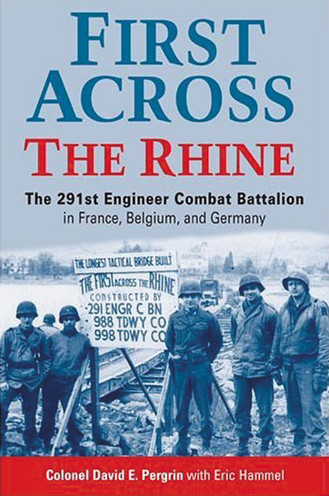 First Across the Rhine: The 291st Engineer Combat Battalion in France, Germany, and Belgium, by Col. David E. Pergrin with Eric Hammel, Zenith Press, St. Paul, Minn., 2006 (reprint), 338 pp., photographs, maps, index, bibliography, $17.95, softcover.
First Across the Rhine: The 291st Engineer Combat Battalion in France, Germany, and Belgium, by Col. David E. Pergrin with Eric Hammel, Zenith Press, St. Paul, Minn., 2006 (reprint), 338 pp., photographs, maps, index, bibliography, $17.95, softcover.
It is a sure bet that most infantrymen would say that the only bunch tougher than the foot soldiers themselves were the combat engineers.
If you have a hard time believing that, then you have not read First Across the Rhine, the 1989 classic recently reprinted in paperback. Pergrin was the storied 291st’s commanding officer, and he and Hammel write with pride and precision about the battalion’s exploits.
Engineer combat battalions were the unsung heroes of the American Army in World War II. In the attack, they were always in the van—detecting and removing mines, repairing or installing temporary bridges and roadways, destroying enemy barriers, roadblocks, and fortifications. In the defense, they did the opposite—sowing minefields, destroying bridges and roadways, building barriers, roadblocks, and fortifications. They were also trained and ready to fight as infantrymen, as much of their work was often performed while under heavy enemy fire.
The 291st seemingly was wherever the action was hot in Europe and engaged in some of the most famous episodes of the war. It was the 291st that used bulldozers to break through the hedgerows of Normandy’s bocage country, the 291st that helped to spearhead Operation Cobra, the 291st that took part in the Battle of the Bulge, the 291st that discovered the bodies of murdered American POWs near Malmedy, and the 291st that built the 1,100-foot-long pontoon treadway bridge across the Rhine near Remagen.
Formed in March 1943, at Camp Swift, Texas, as a component of the 52nd Engineer Regiment, the battalion sailed for England in October of that year, where it trained until June 1944 for the cross-channel invasion. Arriving in Normandy on D+18, Pergrin’s men were almost immediately put to the test, clearing German mines along a vital roadway between Carentan and Ste.-Mère-Eglise. As Pergrin says, “The stretch of road that was to come under our care was the only hard-surfaced highway connecting the two American invasion beaches, Omaha and Utah.”
Once the road was secured, the 291st was called upon to perform more heroics. Bulldozer operators braved German fire and crashed through hedgerows that were nearly as impenetrable as stone fortress walls, enabling the infantry to pass through and battle the entrenched enemy.
Operation Cobra, the breakout from the beachhead, took the 291st to Mortain, then raced eastward, past the awful slaughter of the Germans at Falaise, past Paris, and into Belgium for the winter of 1944-45. There the 291st found itself on the front lines fighting off the German counter offensive during the Battle of the Bulge, facing columns of panzers at key roadblocks.
There were still six months of war left. After the Allies had broken into Germany, the last natural barrier, the Rhine River, had to be crossed. With the Ludendorff railroad bridge at Remagen still standing but heavily damaged and in danger of collapse at any moment, the 291st threw a pontoon treadway bridge across the wide expanse of water.
The majority of the book concentrates on this operation. The night before construction began, a worried Pergrin addressed his staff officers and company commanders: “You’re about to face an awesome-looking scene for several days at Remagen. We’ve got to get an M-2 treadway across, fast. The Ludendorff Bridge will collapse soon and the Germans will bring up reinforcements to wipe out our guys already on the east side of the river. The brass is sure that Hitler’s going to go nuts and do everything possible to break up this situation, so you can expect all hell to break loose. I hope—no, pray—that we come out of this in good shape. We’re in a tough position.”
In spite of heavy and accurate enemy fire that matched Pergrin’s prediction of hell breaking loose, his men succeeded in completing the span—an effort that enabled the American First Army to cross the Rhine and pour into Germany, sealing its doom.
First Across the Rhine is a thrilling, page-turning account of a small number of brave individuals who, through sheer guts and determination, did as much as any other American unit to win the war. A definite must read.
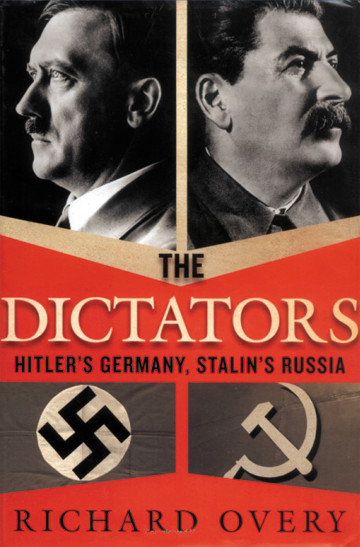 The Dictators: Hitler’s Germany and Stalin’s Russia, by Richard Overy, W.W. Norton, New York, 2006 (reprint), 358 pp., photographs, index, bibliography, $24.95, softcover.
The Dictators: Hitler’s Germany and Stalin’s Russia, by Richard Overy, W.W. Norton, New York, 2006 (reprint), 358 pp., photographs, index, bibliography, $24.95, softcover.
Delving even more deeply into the lives of Hitler and Stalin and the demonic, totalitarian regimes over which they ruled is The Dictators, by acclaimed British historian Richard Overy, author of The Battle of Britain and Why the Allies Won.
This superb book, a softcover reprint of the 2004 hardcover version, is illustrated with many rarely published photos and is stunning with its numerous insightful observations and trenchant commentary. Overy, for example, points out that after both dictators came to power, one of their first acts was to dismantle their respective legal systems and replace them with laws—and a secret-police structure—that served the evil intentions of the state rather than as a protection for the people.
Overy also compares and contrasts Hitler’s and Stalin’s efforts to strengthen their nations’ economies (Stalin’s infamous Five-Year Plans and Hitler’s vast public works projects that mirrored Roosevelt’s Civilian Conservation Corps).
The author also shows how the two men shaped the arts in their respective countries, capriciously banning certain works and their creators, who were imprisoned if they did not toe the party line, while simultaneously promoting the hacks and lackies who saw capitulation to their leaders as the key to their personal survival.
With total control over every aspect of civilian life, both dictators could go about building up their weakened armed forces and preparing for war. Overy notes, “Hitler and Stalin both anticipated a major war between Germany and the Soviet Union. Hitler, like many other Europeans, regarded Bolshevism as the main threat to the survival of western civilization; Stalin believed … that Germany under Hitler was the most dangerous and predatory imperialist of all. Both dictators wanted to avoid defeat at all costs. Bolshevik victory, Hitler thought, would be worse for Europe than the fall of the Roman Empire. Imperialist war for Stalin was counter-revolution, the loss of everything achieved since 1917. Since both regarded war as an unaviodable historical necessity, each armed against the other.”
As Overy points out in his conclusion, “The barbarously destructive war waged between the two populations between 1941 and 1945 derived its savage character from the depths of social support and psychological identification with the two dictatorships that fought it….This war could not have been fought by democratic states.”
The Dictators is an important book, one of the very best ever written about the duel between Hitler and Stalin, Germany and Russia.
 Odyssey of a Philippine Scout: Fighting, Escaping, and Evading the Japanese, 1941-1944, by Arthur Kendal Whitehead, Aberjona Press, Bedford, Penn., 2006, 286 pp., photographs, maps, $24.95, softcover.
Odyssey of a Philippine Scout: Fighting, Escaping, and Evading the Japanese, 1941-1944, by Arthur Kendal Whitehead, Aberjona Press, Bedford, Penn., 2006, 286 pp., photographs, maps, $24.95, softcover.
At the beginning of World War II, the Philippines were America’s farthest outpost, and they were savagely attacked by the Japanese on December 8, 1941 (still December 7 in Hawaii). One of the American units that fought a brave but ultimately futile battle against the invaders was the horse-mounted 26th Cavalry Regiment, known as the Philippine Scouts.
As an officer with the Philippine Scouts, Arthur Whitehead, armed only with a .45-caliber pistol, tried to beat back the overwhelming Japanese tsunami, but to no avail. In this memoir he writes of the defenders’ retreat to the shrinking perimeter of the Bataan Peninsula, of being separated from the 26th during its first combat action, of being captured and then escaping from imprisonment to fight as a guerrilla. After two years of heart pounding, narrow encounters while evading the Japanese and hostile Filipinos, Whitehead managed to escape in a tiny sailboat for the 3,000-mile journey to Australia.
Odyssey of a Philippine Scout is not only an interesting account of survival but, more importantly, an inspiring story of the legendary resourcefulness, resilience, and resolution of the American soldier in World War II.
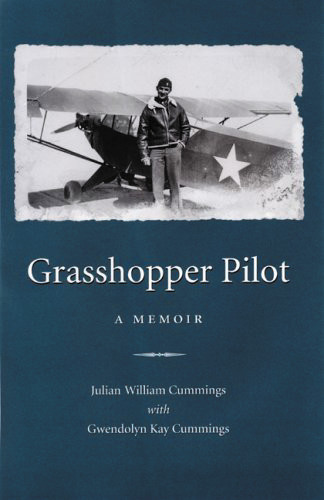 Grasshopper Pilot: A Memoir, by Julian William Cummings with Gwendoyln Kay Cummings, Kent State University Press, Kent, Ohio, 2005, 92 pp., photographs, maps, $19.95, hardcover.
Grasshopper Pilot: A Memoir, by Julian William Cummings with Gwendoyln Kay Cummings, Kent State University Press, Kent, Ohio, 2005, 92 pp., photographs, maps, $19.95, hardcover.
Few groups of men in World War II have been as overlooked by history as the “grasshopper pilots,” brave fliers in slow-moving (65-75 mph) L-4 Piper Cubs who served as the eyes of the artillery and spied on the enemy from above. Besides its all-important reconnaissance role, the versatile L-4 was used to evacuate the wounded, transport generals, ferry supplies, serve as a messenger, drop leaflets, and even bomb enemy positions! At last there is a book that gives this group its due.
Julian Cummings was one of the first Grasshopper pilots to be trained and one of the first to see combat. He flew 485 aerial reconnaissance missions for the 3rd Infantry Division in North Africa, Sicily, Italy, and during the battle to reclaim the Philippines and the occupation of Japan. His slim, well-written book is full of fascinating vignettes (such as the time a Grasshopper pilot downed a Messerschmitt Me-109 fighter by forcing it into a narrow canyon in Italy from which it could not escape).
Put this one on your bookshelf.
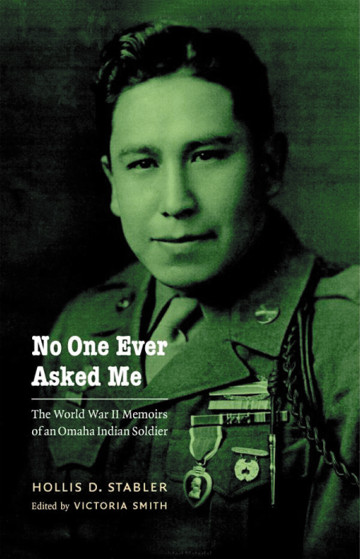 No One Ever Asked Me: The World War II Memoirs of an Omaha Indian Soldier, by Hollis D. Stabler, edited by Victoria Smith, University of Nebraska Press, Lincoln, 2005, 185 pp., photographs, maps, index, bibliography, $24.95, hardcover.
No One Ever Asked Me: The World War II Memoirs of an Omaha Indian Soldier, by Hollis D. Stabler, edited by Victoria Smith, University of Nebraska Press, Lincoln, 2005, 185 pp., photographs, maps, index, bibliography, $24.95, hardcover.
Native Americans were among the United States’ toughest and bravest soldiers. One need only look at the contributions of Indians as code-talkers and warriors within the Marine Corps and 45th Infantry Division to confirm this fact.
Now comes a rare autobiography by a member of the Omaha tribe who served with the 2nd Armored Division, 67th Armored Infantry Regiment.
In No One Ever Asked Me, Hollis Stabler recalls his pre-war life in Nebraska, Iowa, Kansas, and Oklahoma during the Great Depression, his wartime experiences in North Africa, Italy, and France, and his new battles with old prejudices upon his return home. Native Americans have a long tradition of oral history, and Victoria Smith spent months interviewing Stabler and editing this volume.
She has masterfully interwoven historical insights into the veteran’s vivid reminiscences, thus providing the reader with a rich context in which to view the life and times of one American Indian soldier.
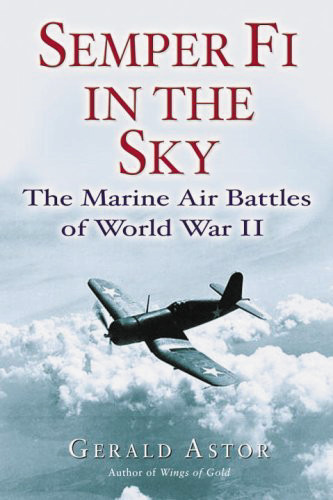 Semper Fi in the Sky: The Marine Air Battles of World War II, by Gerald Astor, Presidio Press, New York, 2005, 366 pp., photographs, maps, index, bibliography, $15.95, softcover.
Semper Fi in the Sky: The Marine Air Battles of World War II, by Gerald Astor, Presidio Press, New York, 2005, 366 pp., photographs, maps, index, bibliography, $15.95, softcover.
Following up on his Wings of Gold, the story of U.S. Navy aviators in World War II, Gerald Astor brings us the compelling narrative of the Marine Corps’ air war against the Japanese.
Operating both from carriers and island bases, the Marine pilots and crews took the war to the enemy, first with obsolete aircraft that were no match for the advanced Zeros, and later with the superior Vought F4U Corsairs for which the Japanese had no answer.
Using unpublished memoirs and oral histories gathered from dozens of Marine pilots, Astor covers the entire span of the Pacific war—from the debacle at Pearl Harbor to the final fighter sweeps over Japan—and puts the reader right into the cockpit with the pilots.
In describing a wild plane versus ship duel over Guadalcanal, for example, Lieutenant Henry Hise, piloting a dive bomber, says, “A Japanese ship opened up on me with a tracer. Fraley (his rear gunner) opened up back on ship with his twin 30s. The tracers looked like they were barely crawling up at you and then as they got near, they went zip, by you in a flash.”
This account of air combat is as real as it gets.

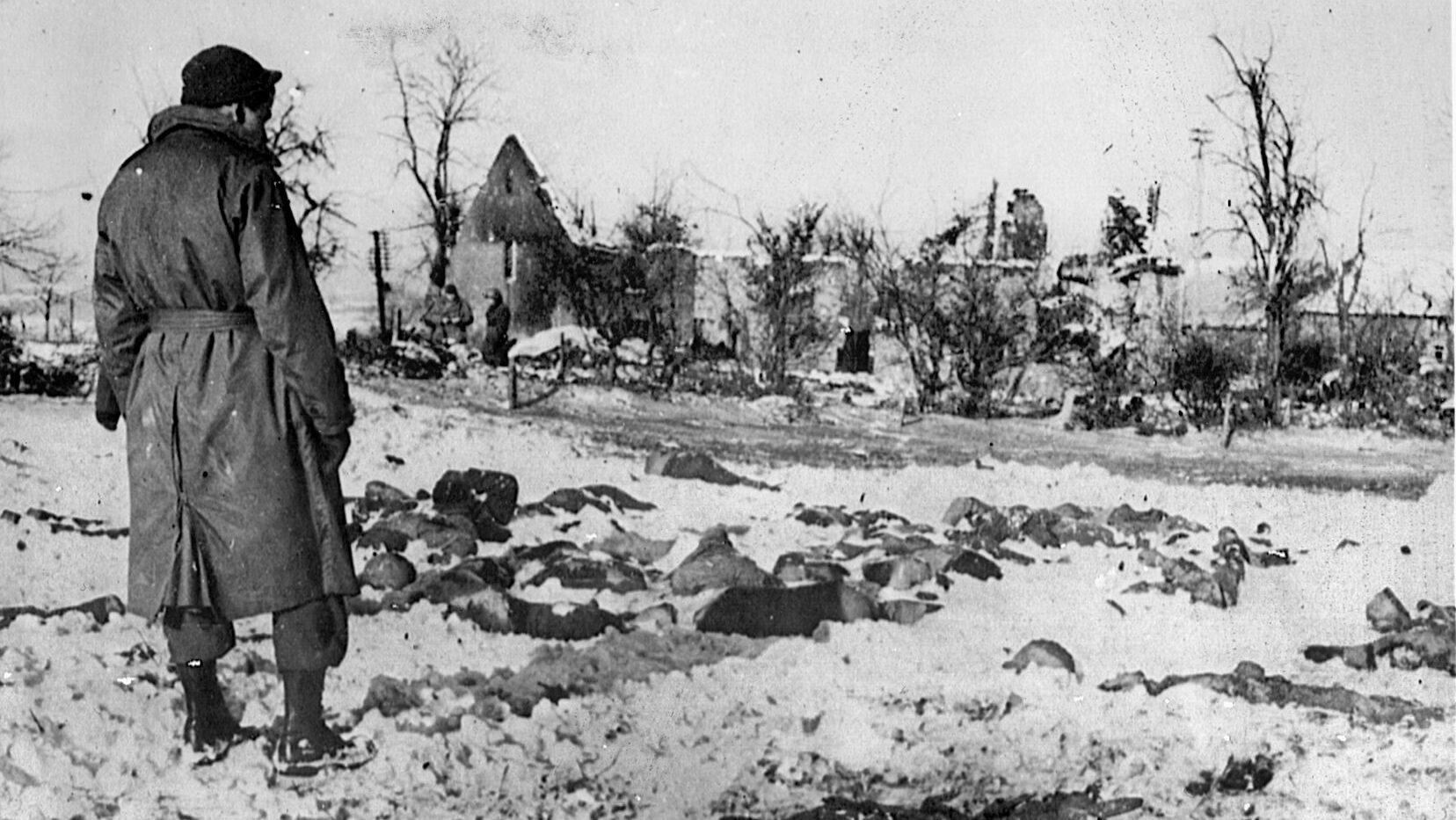
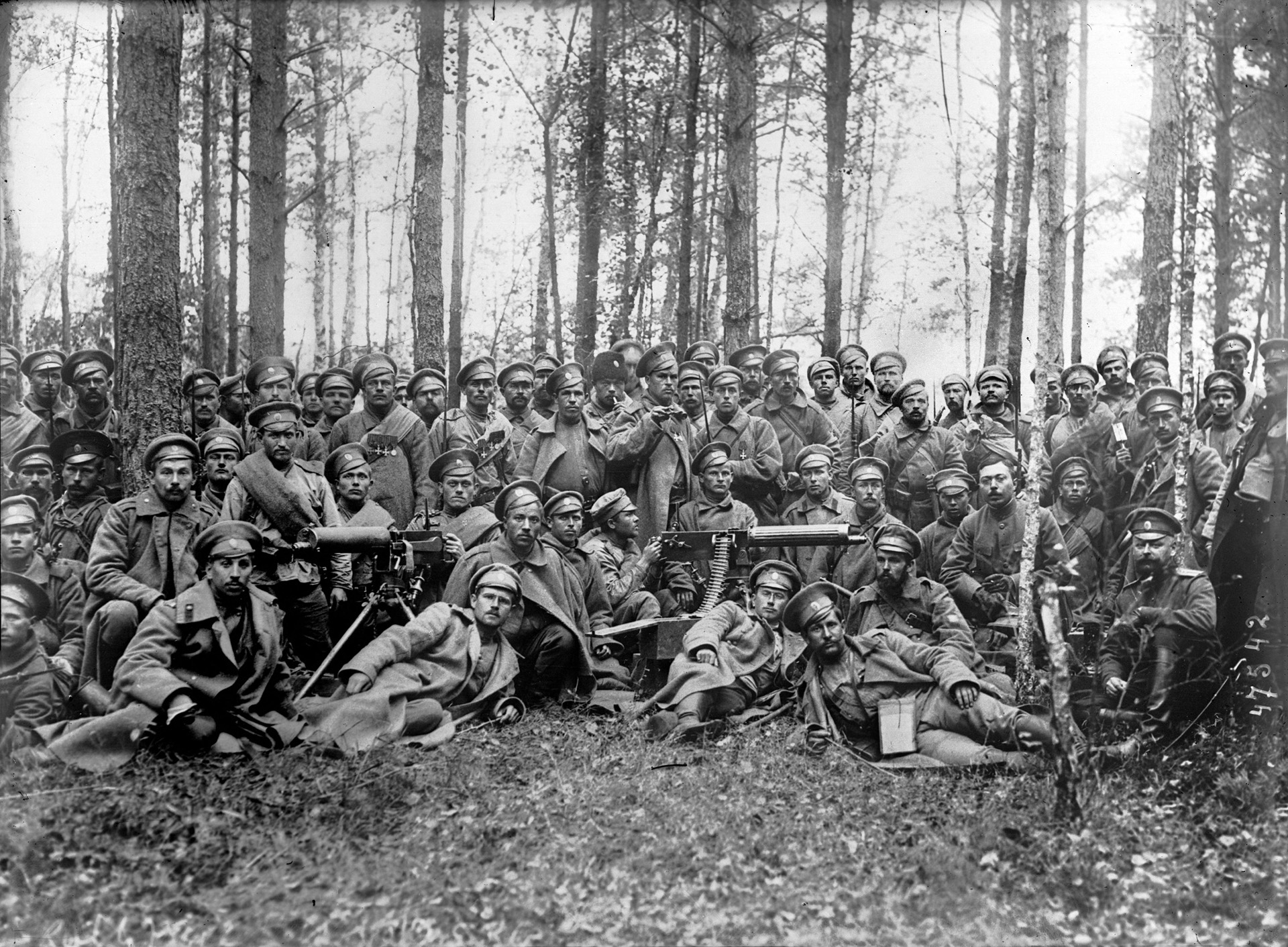
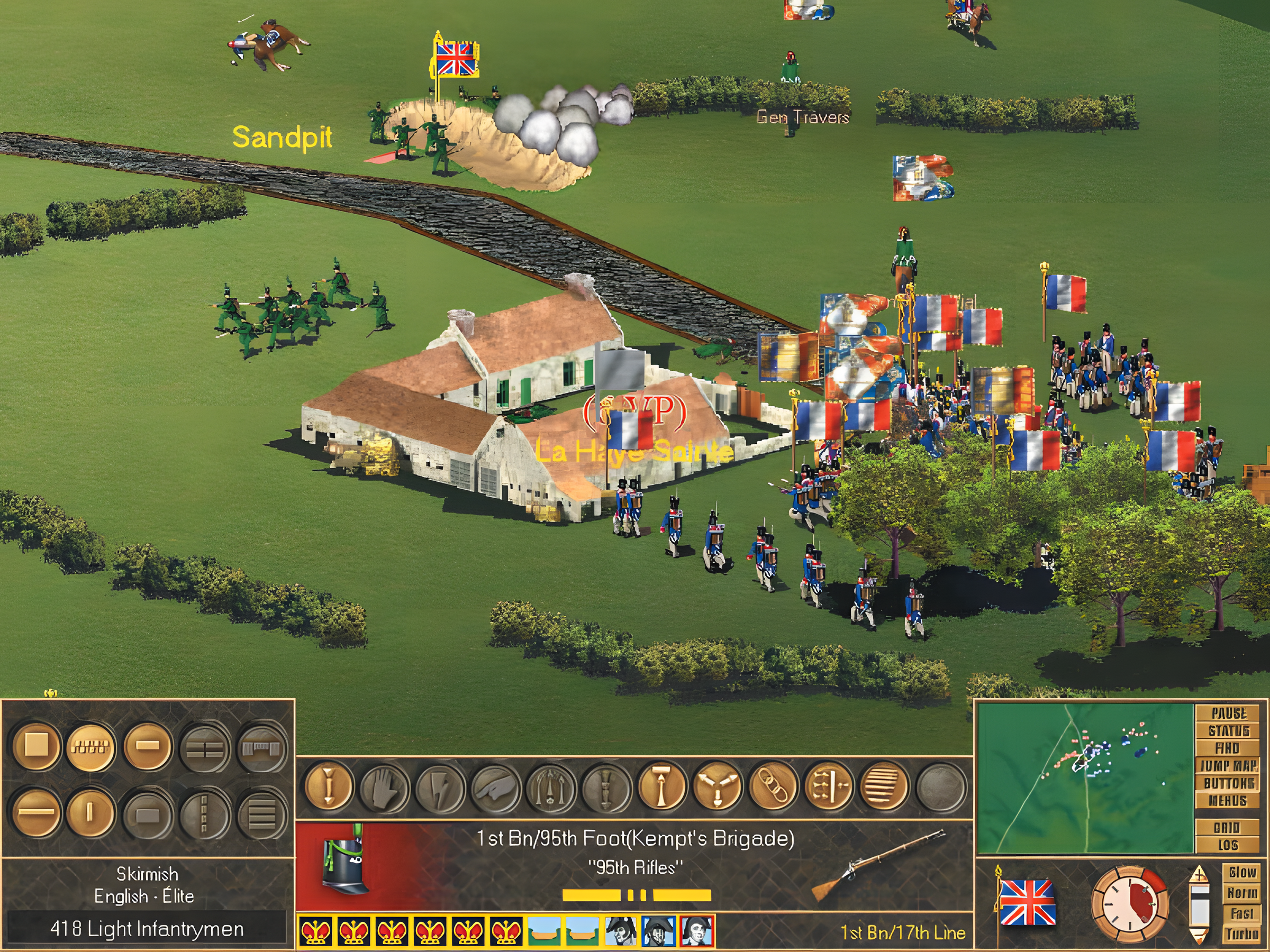
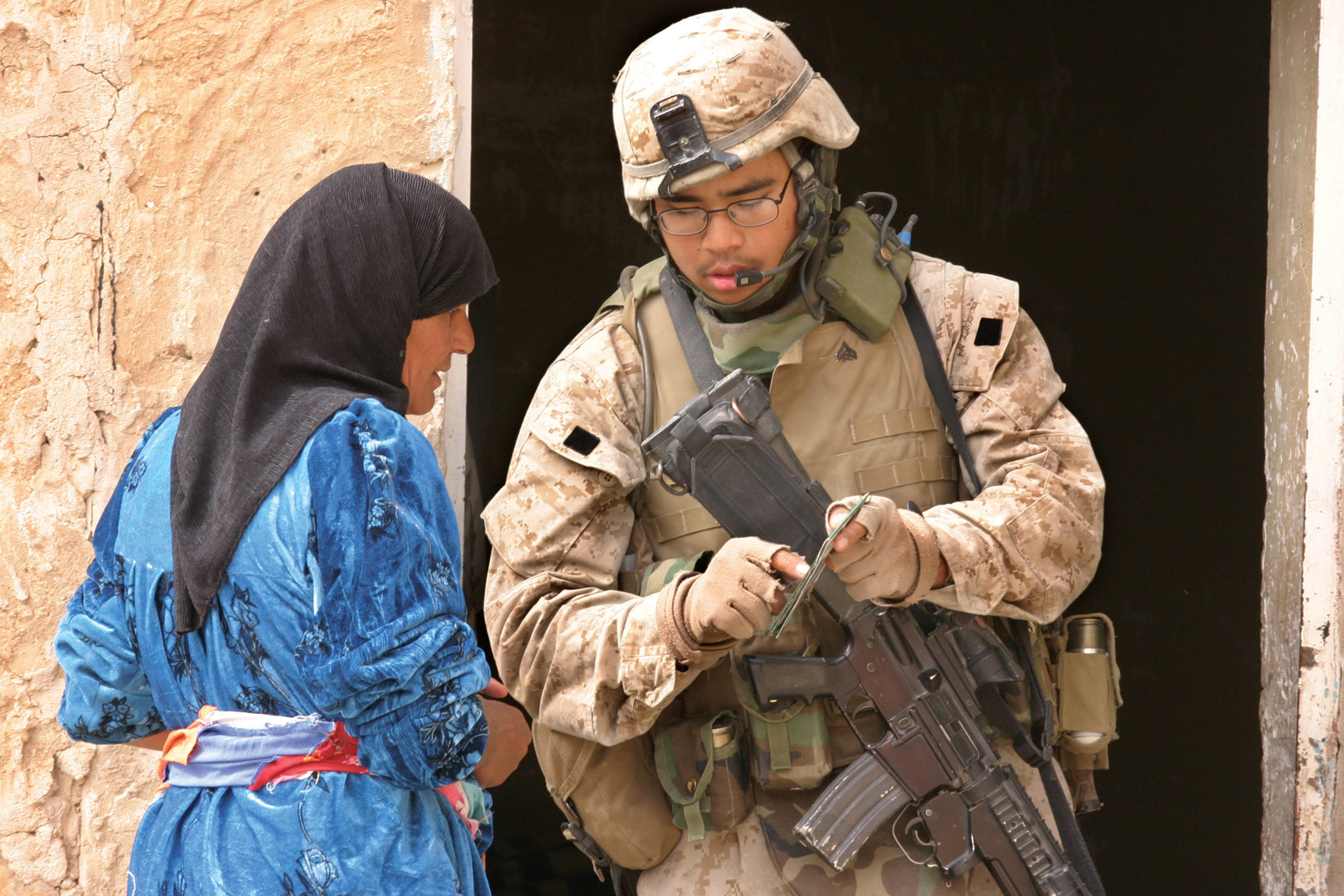
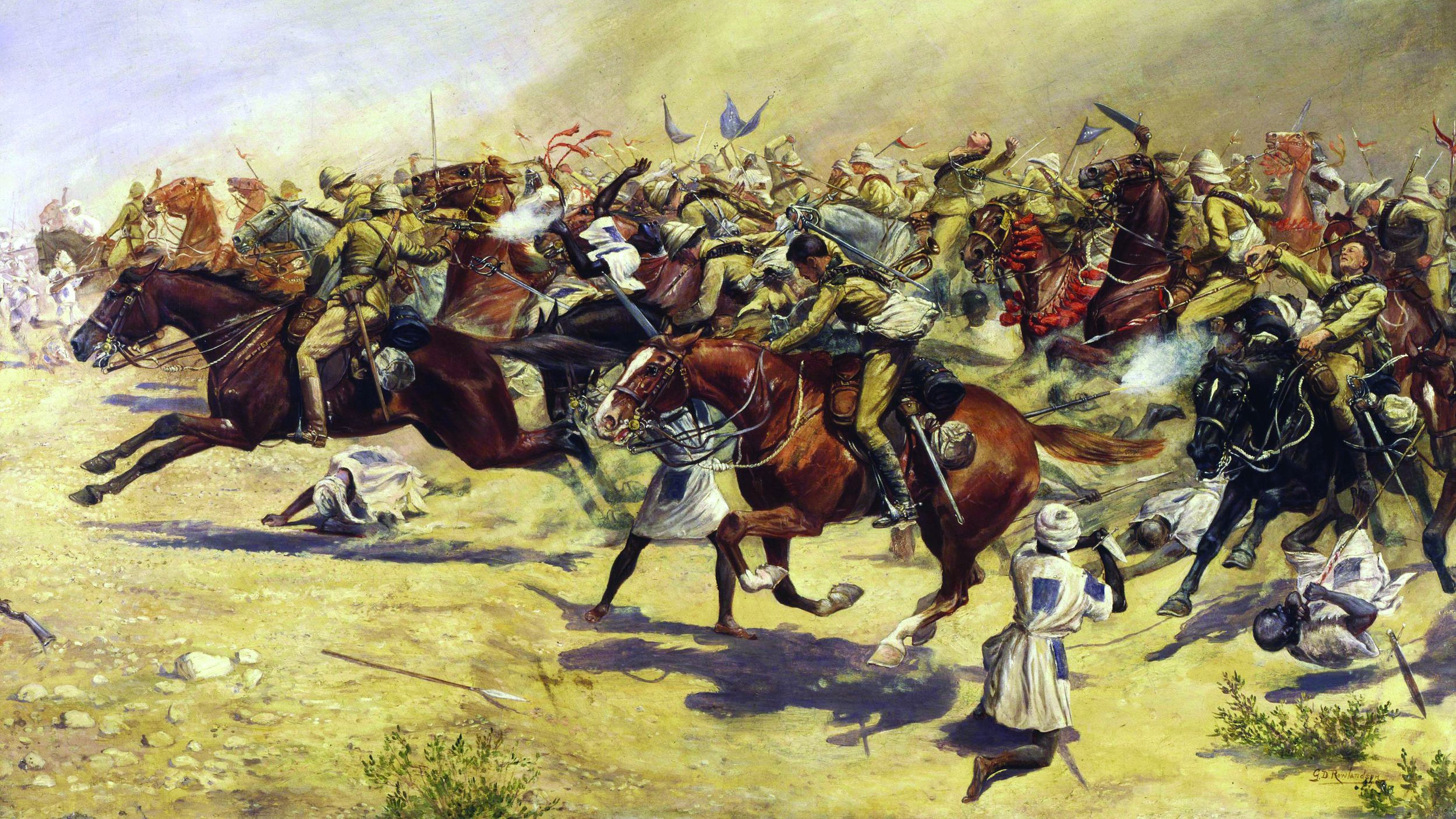
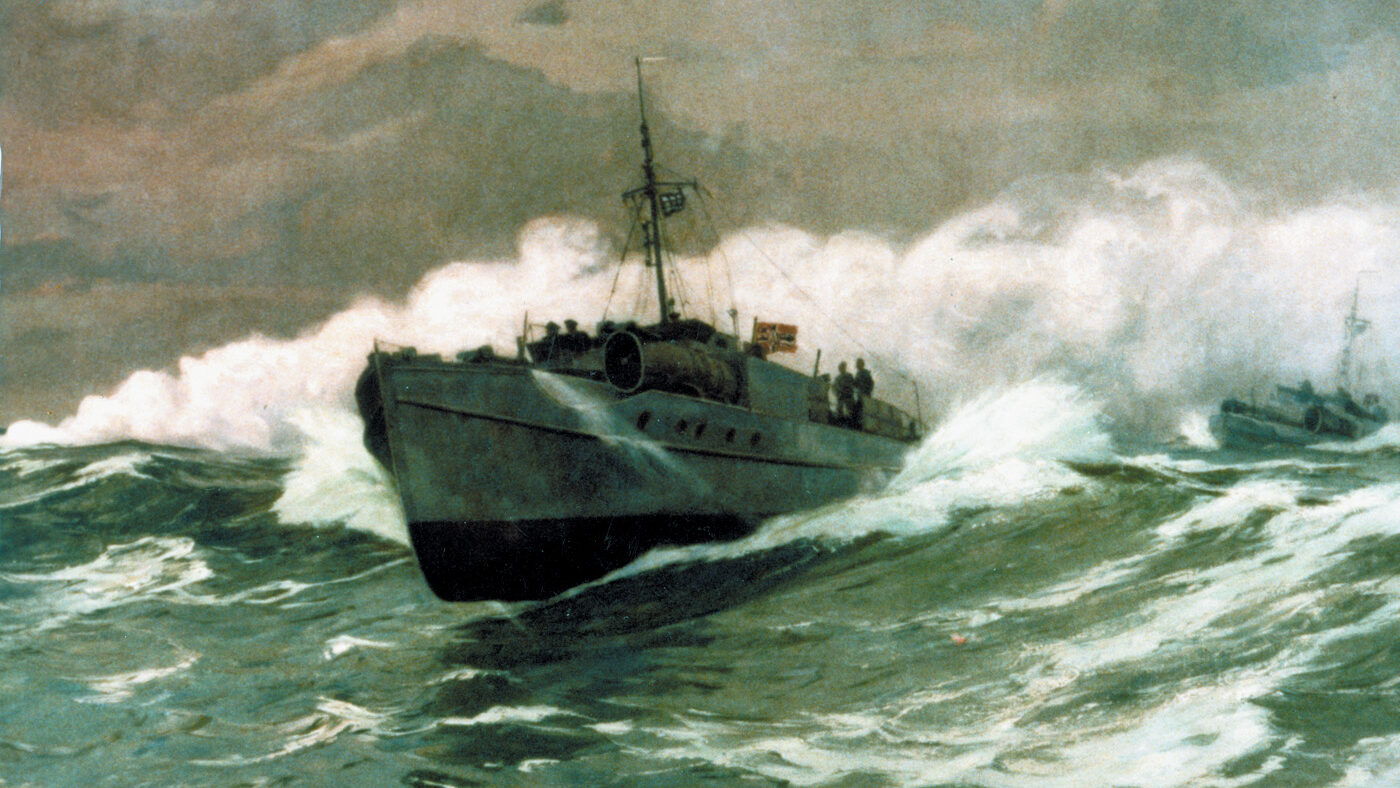
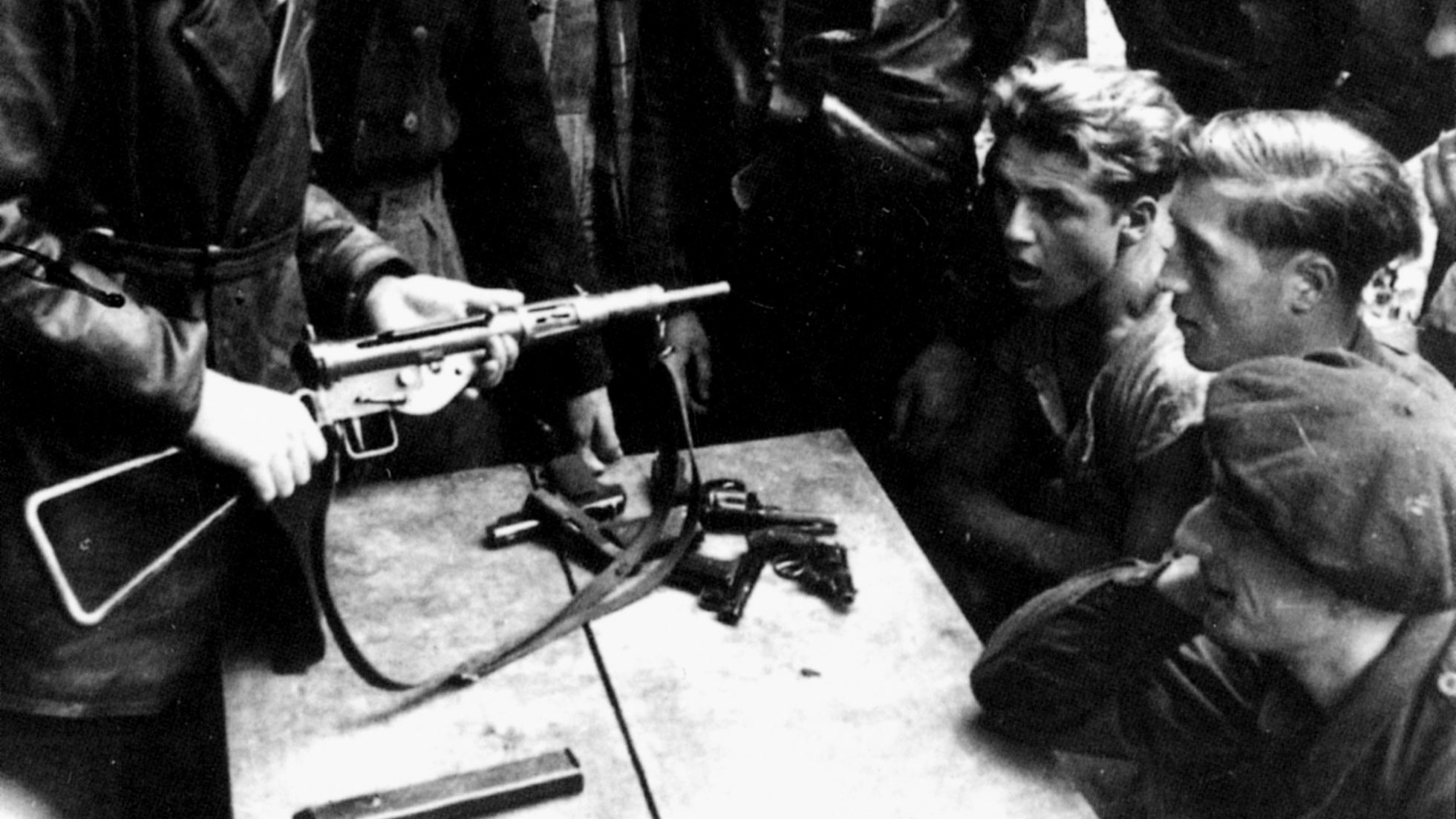
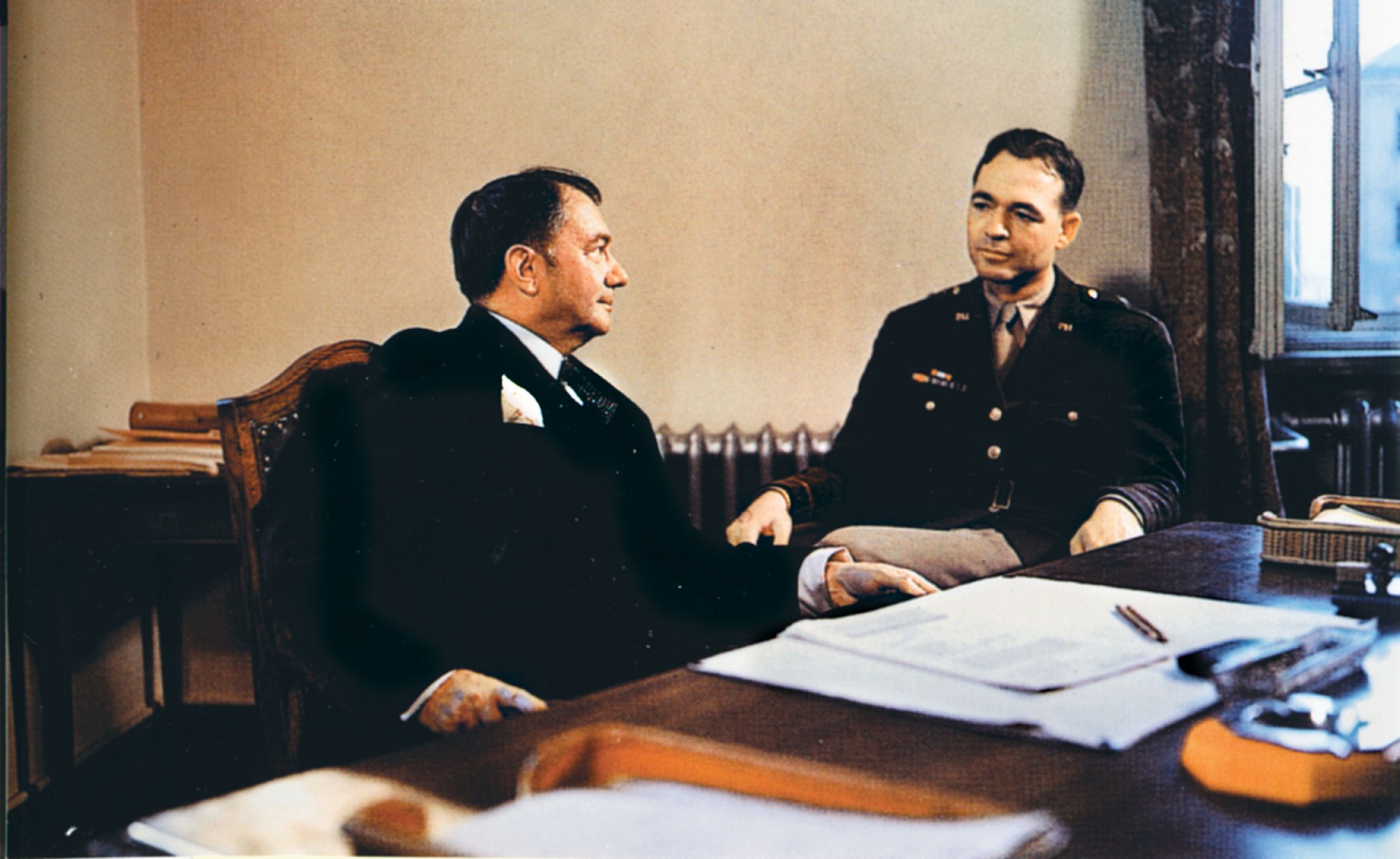
Join The Conversation
Comments
View All Comments